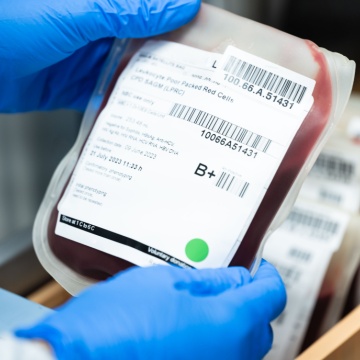Blood banks are paramount in healthcare systems all over the world. They function as pivotal resources for all types of treatments, surgeries, and emergency responses. Naturally, blood banks are no less than lifelines for patients and this is why must follow strict safety and efficacy standards while storing and managing blood products.
Temperature monitoring systems are indispensable for blood banks because of their ability to track and regulate storage conditions for plasma, red blood cells, and platelets. As a result, facility workers can prevent spoilage and contamination by maintaining these blood products within precise temperature ranges. In addition to preventing product loss and protecting patient health, precise monitoring of temperature also helps adhere to blood safety and quality regulations.
Temperature monitoring is a mandatory requirement for blood banks because of the key factors mentioned below.
- The recommended temperature range for the storage of blood products is usually between 2°C and 6°C. Storage within this range is essential for preventing bacterial contamination, which is extremely likely in higher temperatures.
- Temperature monitoring also helps ensure the viability of red blood cells, plasma, and platelets. These blood components can perform their functions such as immune defense, clotting, and oxygen transport, only when they are stored at the correct temperature.
- Temperature monitoring is even more critical while preserving rare blood types. As these blood types are scarce, their availability and safety can be a challenge.
Features of an Effective Temperature Monitoring System
Blood banks should look for some key features in the temperature monitoring systems.
- Continuous and automated monitoring is essential because this feature allows round-the-clock monitoring of the temperature of the fridges and cool rooms and provides real-time alerts in case of any deviation.
- Remote monitoring is another important feature because it allows monitoring temperatures across multiple storage locations. Staff can monitor remotely and receive email or SMS notifications, in case there is a need for any corrective measure.
- It is highly recommended to opt for a system capable of recording and securely storing temperature data at regular intervals. This reporting capability allows for the analysis of temperature trends over a period of time.
- Calibration is another key feature that allows us to fine-tune the systems for reliability and accuracy. With this feature, users can minimise the occurrence of false alerts while maintaining the integrity of blood storage conditions.
- A battery backup can be extremely useful for uninterrupted monitoring during power outages. Additional backup systems can also be used as an essential safeguard against system failures.
- Finally, it always makes sense to opt for a system with a user-friendly and intuitive interface, equipped with customisable settings. These systems enhance usability by simplifying daily operations and management of the cold chain.
Temperature Monitoring Technologies
Discussed below are some of the technologies used in temperature monitoring systems.
- Cloud-based monitoring is a commonly used technology for real-time temperature condition monitoring across multiple pieces of equipment.
- SIM card connectivity is also used extensively for continuous monitoring and transmission of data during network disruptions or in remote locations.
- Robust data security is another important consideration to prevent unauthorised access to protect sensitive data.
At ShockWatch, we offer a comprehensive range of temperature monitoring systems suitable for blood banks, vaccine storage, food processing, and many other industries. Please contact us today to find out more.


